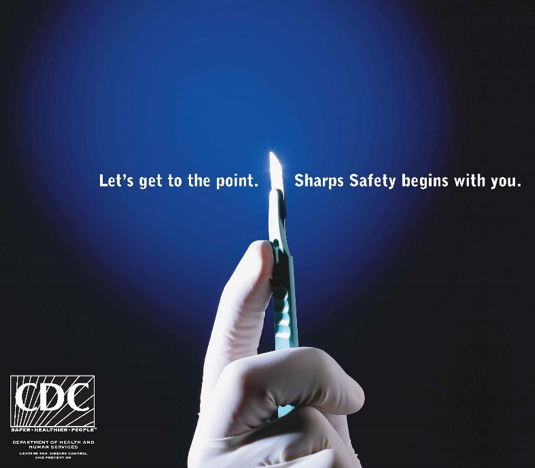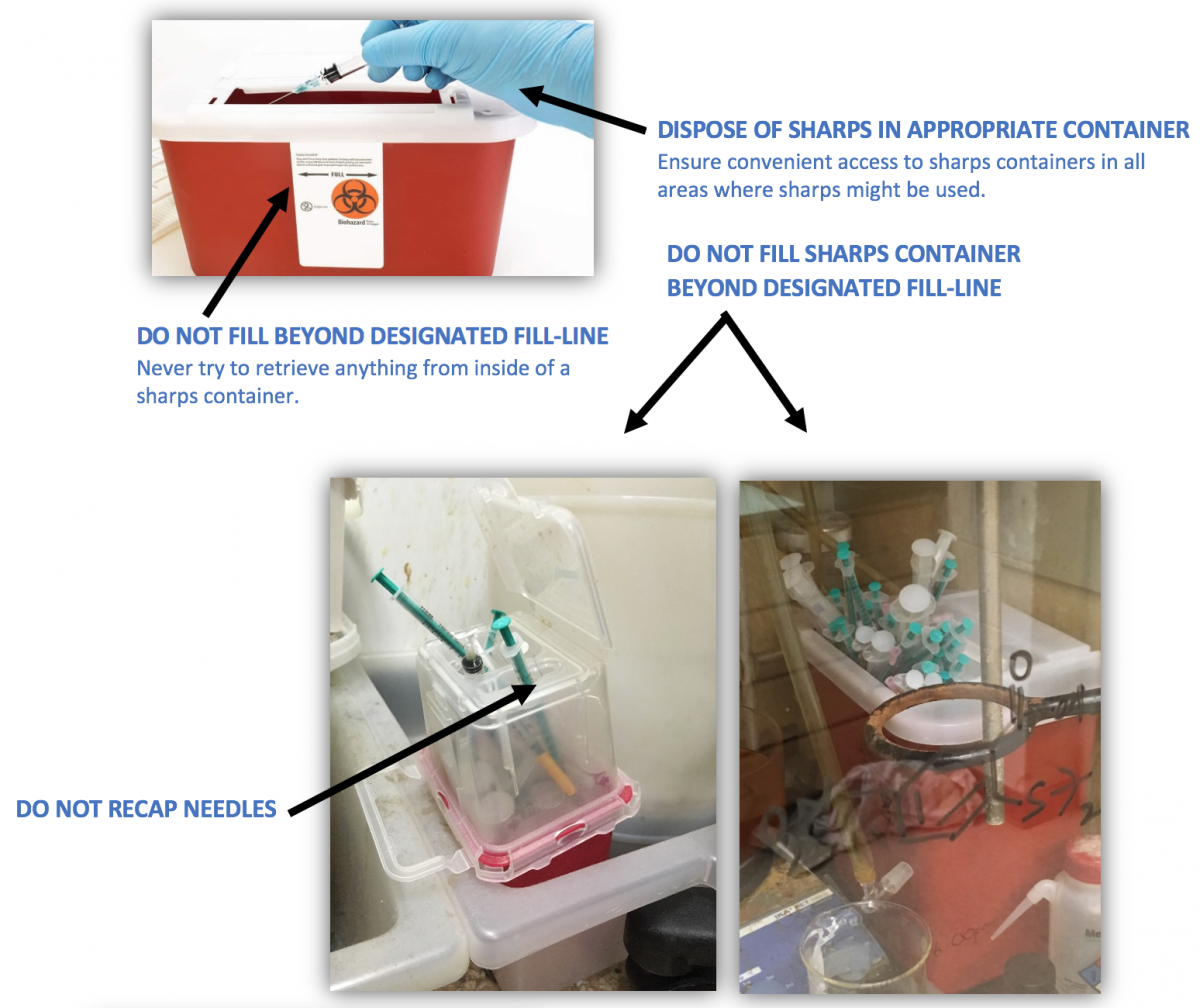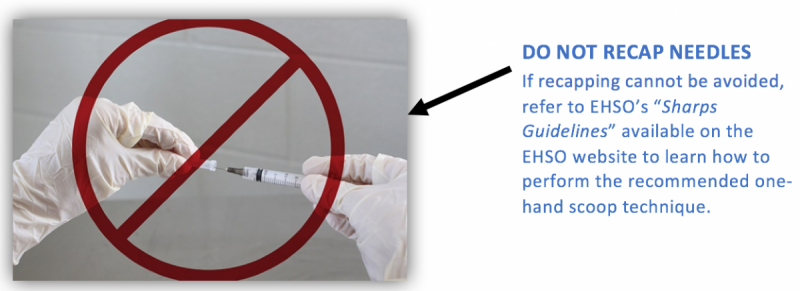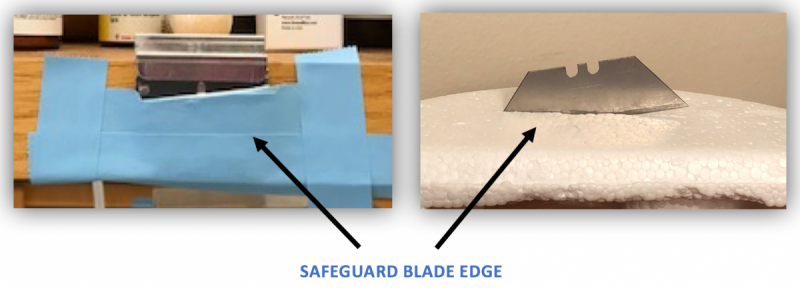The Centers for Disease Control and Prevention (CDC) estimates that 62% – 88% of sharps injuries can be prevented simply by using safer medical devices. Researchers should always consider how to safely handle sharps and identify procedures and/or scenarios when a sharps injury could occur. By identifying when a sharps injury can occur, planned activities can be evaluated, reducing the likelihood of a sharps-related injury.
What is the proper disposal method for sharps?
Sharps disposal is important. Lab personnel, as well as non-laboratory workers, can be injured by sharps that are disposed of improperly. For example, leaving a razor blade on a laboratory bench or discarding syringes with needles in the regular trash or recycling, present a risk to housekeeping personnel that are responsible for cleaning these areas. Sharps must be safeguarded when not in use and placed in a sharps container for disposal. REMEMBER: needles should not be recapped.
Are there specific requirements for sharps containers?
According to OSHA’s Bloodborne Pathogen Standard, a sharps container must meet the following requirements:
- Closeable
- Puncture Resistant
- Rigid
- Leak-proof
- Appropriately labeled and/or color coded
When and how should I dispose of sharps containers?
Sharps containers must not be filled more than 3/4ths full. Most sharps containers come marked with a fill line that indicates when the container is considered full. Once contents reach the fill line, dispose of the sharps container by closing it securely. The sharps container should then be placed inside of a Stericycle box.
Are there devices that may prevent sharps injuries?
Labs are encouraged to evaluate and purchase safer sharps devices. Devices with Sharp Injury Protection (SIP) features, also known as sharp safety devices, have engineering controls that are built into the product and are designed to prevent sharps injuries.*
A safer sharps device can prevent injuries by covering or isolating the sharp directly after use. There are safety scalpels, self-sheathing needles, retractable needles, and blunt tip needles. These items are designed to reduce the likelihood of sharps injuries. Refer to Appendix 3 in the Emory University Bloodborne Pathogens Exposure Control Plan for a list of available sharp safe devices.
*Referred to by OSHA as Sharps with Engineered Sharps Injury Protection – SESIPs
Are there any other tips on preventing sharps injuries in the lab?
It is the consistent practice of safe behavior that helps prevent accidents and minimizes exposure to contaminated sharps. Lab personnel can protect themselves by taking the following precautions:
Additional precautions to keep in mind:
- Keep sharps pointed away from the user and others. Avoid hand-to-hand passage of sharps.
- Locate a sharps container, or have one nearby.
- Check your work area for sharps before leaving (bench tops, fume hoods, biological safety cabinets).
- Maintain visual contact with sharps during use.
- Know what to do in the event of a sharps-related injury:
- Wash for 15 minutes with soap and water.
- Notify your supervisor.
- Complete incident report in the Emory H.O.M.E. portal.
The Sharps Safety Continuum
- Prepare to use the device the moment the sharps are first exposed.
- Take precautions while using sharps.
- Take precautions during cleanup.
- Take precautions during disposal.
Reducing the risk of injury in the workplace is the responsibility of users by ensuring that sharps are handled appropriately, stored correctly, and disposed of properly. Sharp’s Safety is everyone’s responsibility.
For additional information on sharps safety, review the EHSO Safe Use of Sharps Guidelines and Appendix 3 in the Emory Bloodborne Pathogens Exposure Control Plan available in the Forms/Documents section of the EHSO website (http://www.ehso.emory.edu/).
Reference: CDC – https://www.cdc.gov/nora/councils/hcsa/stopsticks/safersharpsdevices.html




